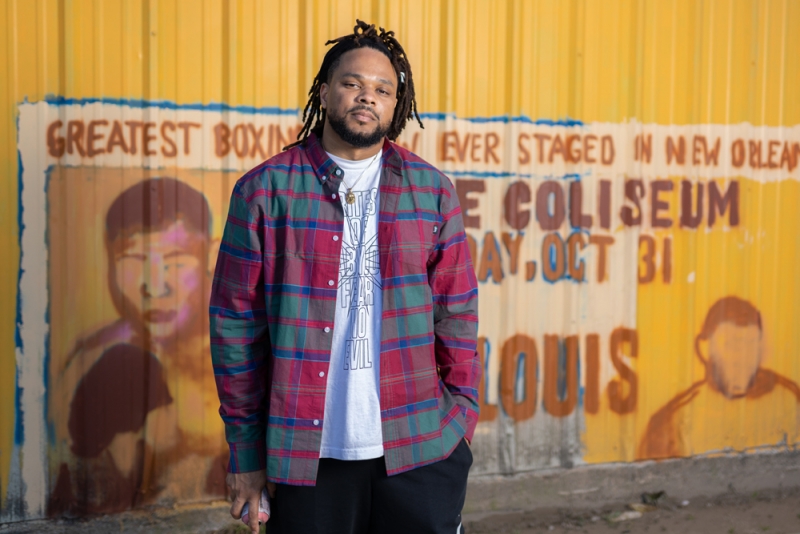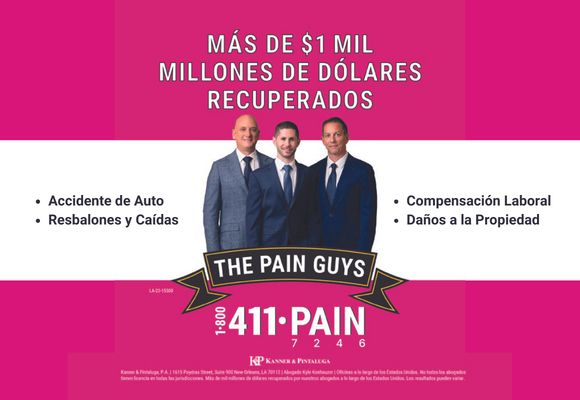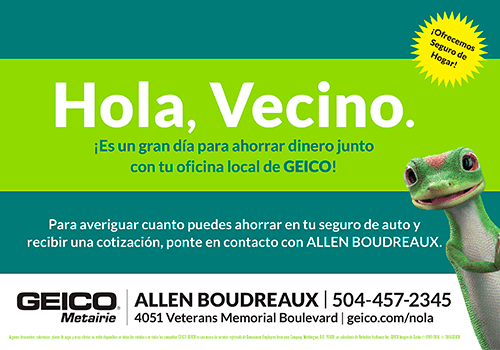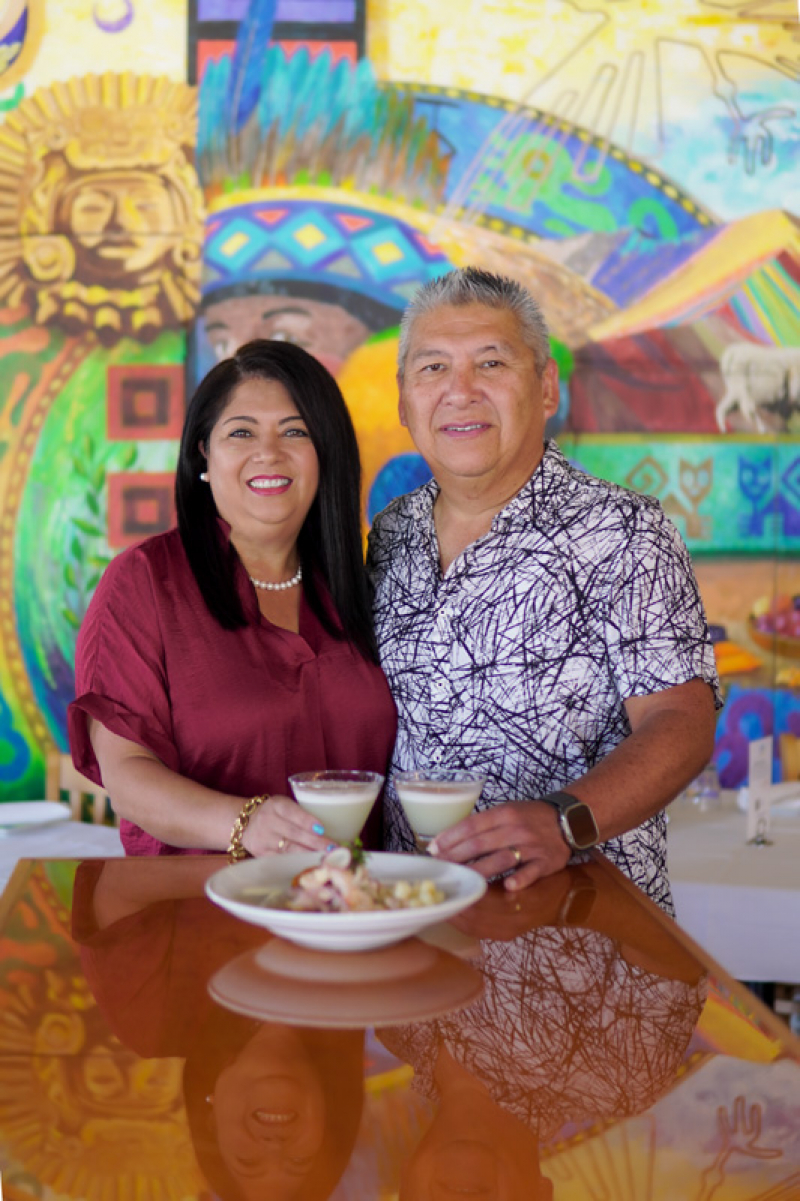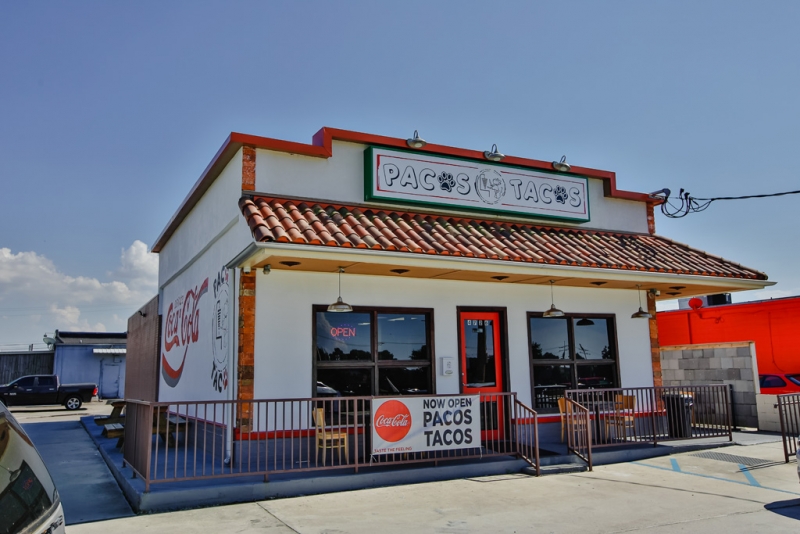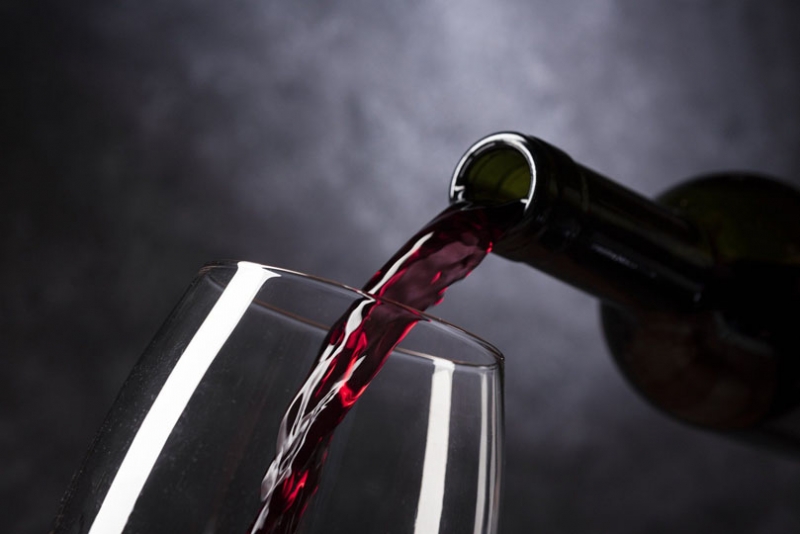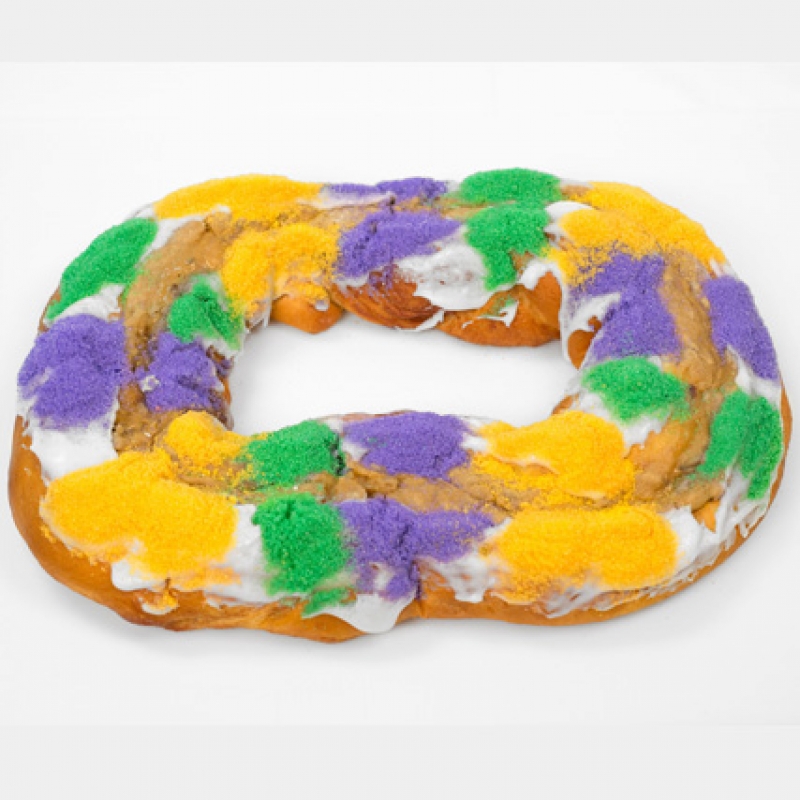- Written by AnaMaria Bech
- Published in Cover Story
Brandan “BMike” Odums
Brandan “BMike” Odums
By AnaMaria Bech
Click aqui para español- >Brandan “BMike” Odums
‘Brandan is out painting” is what I heard upon arriving at Studio Be in the Bywater area of New Orleans for an interview with the artist himself. I checked my email, and, in fact, I had missed the update that instructed me to meet Brandan at 401 N. Roman street. We headed his way during school rush hour, hoping not to be too late for the 4 p.m. appointment. In my mind, I imagined arriving at the location and pulling Odums away from his entourage during the painting session. As I got out of the traffic jam, I arrived at the quiet street and saw the huge mural with sketches of various people, and only about 5% of the wall was fully done. Brandan “BMike” Odums was by himself, propped on a lift, iPad in one hand, spray can in the other, music is playing. It was a beautiful spring day, but a feeling of uncertainty swept through the community as the news about the spread of COVID-19 in our city was breaking. At this point, it was business as usual and Odums’ office for the day felt pleasant with perfect warm weather and even light. He was hoping to make progress on an already overdue project. This was the third of my brief encounters with the artist. However, this was the only time I actually got to see him in his element creating art.
Odums got down from the lift to greet the photographer and I. Just then, a black jeep drove by, blew the horn, only to slow down and park. The driver was Charlie Vaughn, Odums’s friend and an art teacher from a nearby school who came by to analyze his technique and ask him some questions. While we were getting ready to take Odums’ pictures, we talked briefly about his trajectory, about some of the press I’ve read about him, and how much coverage his work has received. We discussed the “illegality” of his initial works at the Florida projects when Odums’ art was considered defiant and forbidden. We mentioned we had been previously introduced by a friend in common during his massive Exhibit Be, an incredible display he had done in Algiers some years ago. He immediately started praising our mutual friend Perez, telling us how he made an impact on his life, saying, “he was one of the first video professionals that reached out to me about 2 Cent and told me what we were doing was dope.”

Odums explained he was working on the last mural that needed to be completed for the commission of the city of New Orleans during its tricentennial celebrated from February 2018 for the whole year. He laughed, explaining he had been traveling a lot, and that when he is in town he is pulled in many directions, including the school tours at his Studio Be on Royal Street. While we talked about the mural, cars passed by and beeped at him. A couple of girls in one car giggled, waved at him, and even looked a bit starstruck. People greeted him, yelled praising words, stopped and admired the mural before moving on. “This is part of the process,” he says. This is another reason why it takes him longer to paint in New Orleans. It’s quite different when he goes out of town to paint because he can fully dedicate himself to that creation free of many distractions. Of course, there are a few interruptions but he can remain focused on his masterpiece. At home, he is a staple of the community and has to take care of business matters while people stop by to greet him and talk to him. Naturally, he doesn’t mind these interactions with the people and the neighborhood as it provides him an opportunity to explain all the layers of the final piece. Educating the public is very much part of his mission, and, as he puts it, “that relationship between audience is needed for sustainability.” For this mural, the city bestowed upon him a complete artistic license, from choosing the location to creating the piece.
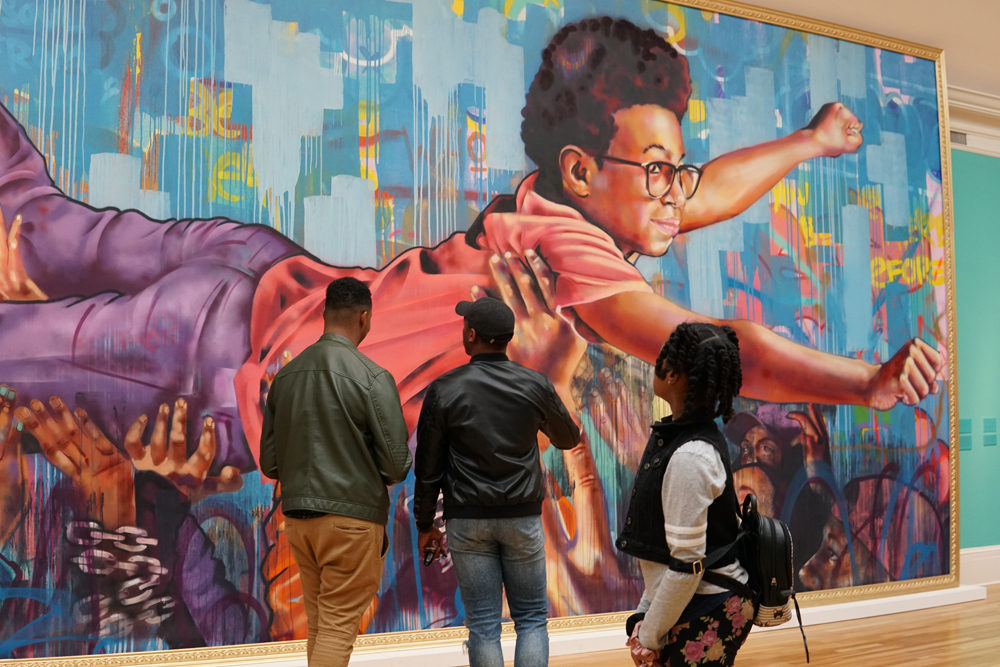
There is a lot of research that goes behind the work. It is a very collaborative process. One location he scouted turned out to be the perfect setting when he learned this location was an important gathering spot known as The Coliseum Arena. Here, boxing matches and other types of gatherings took place, including Civil Rights reunions with important figures such as Dr. Martin Luther King Jr., and Ella Fitzgerald, among many others. “Friends have found newspaper articles, pictures, and all kinds of information about this place,” says Odums, indicating that the process involves community members who develop an interest in researching the history, which makes the artwork very relevant. Friends also contribute by finding people and sending their photographs so that he can portray real people on the walls. “There are lots of sports being played in this park, so they are also supposed to look like they’re the audience for the people playing sports,” Odums explains. These everyday people and some historical characters will be painted to represent different eras. The process starts with a request, and moves through from location scouting, historical research, finding the subjects, creating a digital illustrated composition, gathering materials and equipment, scheduling time, prepping the walls in some areas with a foam roller and paint, and then sketching the shapes with blue spray paint.
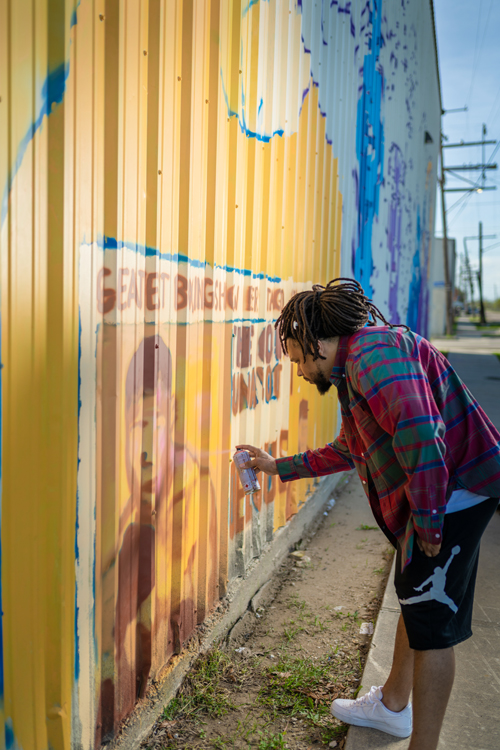
This quiet afternoon outdoors, during a work in progress, was much different than our last time together during his first tour at the Newcomb Art Museum at Tulane University. “Not Supposed to BE Here” was his first solo exhibition in a museum, which opened January 18, 2020, and was to be on view through May 23rd. A free tour on Saturday, March 7th attracted quite a diverse crowd that filled the small gallery. I could see the excitement of his followers from being in the presence of the artist himself. Many were familiar with his work, but for a few others, it seemed like they were crossing a cultural barrier. I could hear them debating whether all the pieces were, in fact, made of only spray paint because “they looked like fine art.” Another group had to ask others if the meaning of the word “dope,” used constantly by Odums while explaining some of his accomplishments, had a positive or a negative meaning. His art, initially considered vandalism, as it happened with graffiti in general, is now part of a gallery exhibit in a museum of a prestigious university.

Throughout the rooms, the quest for belonging is depicted in different forms. We appreciate art ranging from a young Odums learning history and painting historical and cultural heroes on T-shirts to a young professional questioning his place as a production crew member in a local television studio, a bold creator exploring cultural storylines through filmmaking, an artist putting everyday black people on the cover of a comic book, to a person defining his genealogy and being lifted by the stories of his ancestors, to an artist paying homage to cultural heroes, to even art alluding to the fact that the city of New Orleans, isn’t supposed to still be here. Odums reminded the audience that it was his first time hosting the gallery tour. But even while being unclear of the flow and how to take the audience through each art piece, listening to the thought process and learning all the backstory behind each piece was such a valuable insight for those of us in attendance. Nothing on those walls seemed coincidental or fortuitous. Odums’s artistry is masterful. There is a meaning to each subject, with deep layers in the process that convey a carefully crafted message.
His spray-painted works of art become a layered masterpiece that comprises multiple dimensions. We see the large scale characters who may be historical figures, civil rights leaders, musicians, or sportsmen, but also see the greatness of regular people who become relevant, with art that seeks to remind us there is value in the day-to-day.

Knowing that the NOCCA graduate dove deep into videography as his profession, creating a name for himself as a filmmaker in the 2 Cent collective, makes sense when you analyze his visual storytelling technique. Somehow, Odums has created a unique form of art, where still images can somehow move you through layers that become storylines, and colors that enhance character development. Odums sees the stories that are already in place and infuses them with a feeling of “if these walls could talk”. During the tour, he refers to that adage when a young audience member asks about the writing in the background of his pieces.
Odums thinks about the stories that are implied, whether on a wall, or what is contained within a painting, so he recreates that feeling of a wall on a blank canvas. He includes the surface and the texture, the messages that could have been there with words or numbers and allow his characters to show that back story through transparencies within the work. We are so drawn into his paintings because beyond the scale and the skillful management of aerosol paint, his images can tell multidimensional stories.
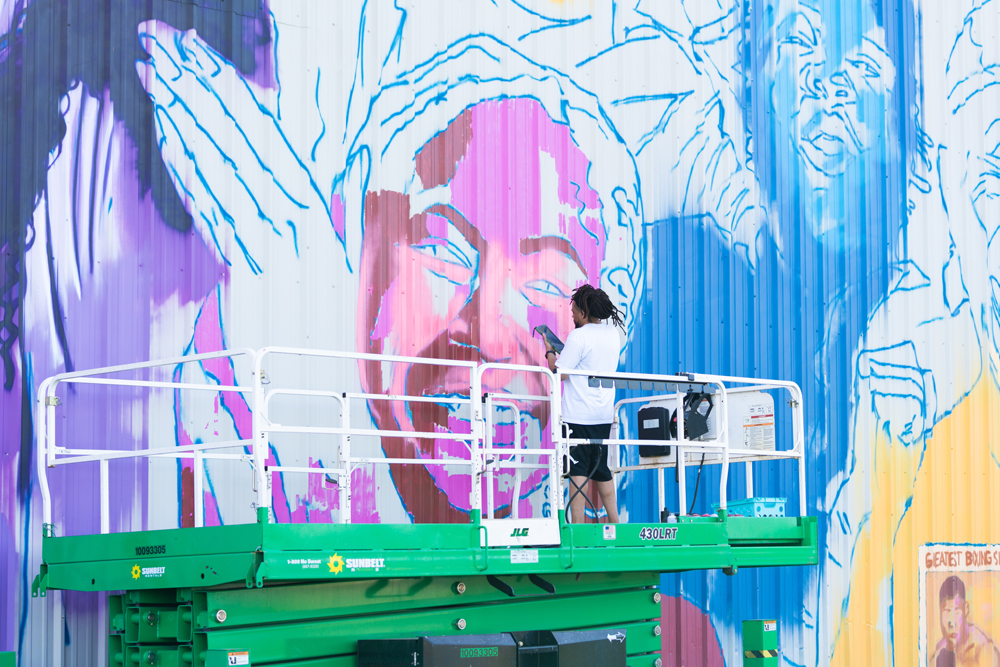
His work starts with lengthy research, and the characters are developed by the essence of the very location, the buildings, the neighborhood, the people, and its audience, all giving such deep meaning to his work. His “fine art graffiti” conveys strong messages and high relevance. His subjects do not provide testimonials or soundbites, but he still incorporates phrases and quotes that enhance the messages and develop the characters. He is aware of the need to honor graffiti art, stating he honors “spray paint as an art of communicating through words and staying true to the messages. I see large scale painting as a process of glorification of the people I paint.” Odums enjoys creating art on big canvases and for him, in many instances, it’s also important that he gets to glorify and value everyday people. He learned by listening to some of his mentors that there is no need for superhuman powers to highlight people. He instructs us, “let’s value them for who they are.”
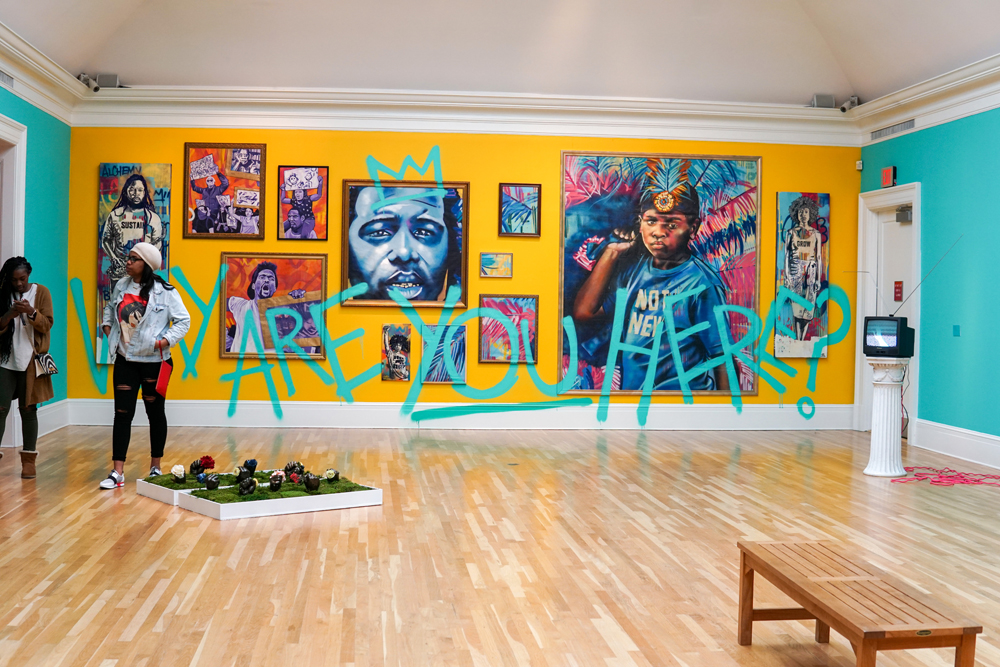
His artwork also challenges us. Odums asks us to evaluate and review our attitudes towards people. “Systemic racism can be tackled through artwork,” he explains while pointing to a painting of a young black man holding a horn and asks if we react differently to that same man when we see him on the street and he is not holding his instrument. His art is a powerful statement against prejudice and the way society sees or unsees people, particularly everyday people of color.
A simple art lesson by Odums came at the end of his gallery tour when a young person asked him if he was ever afraid of the outcome of his final piece. Quite genuinely, he answered, “not really. For me, the process is the most exciting part of creating.” I was a witness to this during the brief time I stayed watching paint after our encounter on N. Roman street, all by himself, favorite tunes playing, spray can in one hand, iPad on the other, painting until sunset. Watching him passionately immerse himself in his art, you wouldn’t think the world around was collapsing through a pandemic. The city came to a halt, but the painting continued. Through all uncertainty, his “BMike” work of art will remain to retell history, to be a witness, and to color our hope. As for the title of his solo show at Tulane University, Odums’s conclusion could serve to foreshadow what we would be dealing with within the next few days. “I don’t know if I’m supposed to be here, but I’m already here and I’m not going anywhere.”



